Qinsheng Zhang
Direct Discriminative Optimization: Your Likelihood-Based Visual Generative Model is Secretly a GAN Discriminator
Mar 03, 2025Abstract:While likelihood-based generative models, particularly diffusion and autoregressive models, have achieved remarkable fidelity in visual generation, the maximum likelihood estimation (MLE) objective inherently suffers from a mode-covering tendency that limits the generation quality under limited model capacity. In this work, we propose Direct Discriminative Optimization (DDO) as a unified framework that bridges likelihood-based generative training and the GAN objective to bypass this fundamental constraint. Our key insight is to parameterize a discriminator implicitly using the likelihood ratio between a learnable target model and a fixed reference model, drawing parallels with the philosophy of Direct Preference Optimization (DPO). Unlike GANs, this parameterization eliminates the need for joint training of generator and discriminator networks, allowing for direct, efficient, and effective finetuning of a well-trained model to its full potential beyond the limits of MLE. DDO can be performed iteratively in a self-play manner for progressive model refinement, with each round requiring less than 1% of pretraining epochs. Our experiments demonstrate the effectiveness of DDO by significantly advancing the previous SOTA diffusion model EDM, reducing FID scores from 1.79/1.58 to new records of 1.30/0.97 on CIFAR-10/ImageNet-64 datasets, and by consistently improving both guidance-free and CFG-enhanced FIDs of visual autoregressive models on ImageNet 256$\times$256.
Cosmos World Foundation Model Platform for Physical AI
Jan 07, 2025



Abstract:Physical AI needs to be trained digitally first. It needs a digital twin of itself, the policy model, and a digital twin of the world, the world model. In this paper, we present the Cosmos World Foundation Model Platform to help developers build customized world models for their Physical AI setups. We position a world foundation model as a general-purpose world model that can be fine-tuned into customized world models for downstream applications. Our platform covers a video curation pipeline, pre-trained world foundation models, examples of post-training of pre-trained world foundation models, and video tokenizers. To help Physical AI builders solve the most critical problems of our society, we make our platform open-source and our models open-weight with permissive licenses available via https://github.com/NVIDIA/Cosmos.
Edify Image: High-Quality Image Generation with Pixel Space Laplacian Diffusion Models
Nov 11, 2024Abstract:We introduce Edify Image, a family of diffusion models capable of generating photorealistic image content with pixel-perfect accuracy. Edify Image utilizes cascaded pixel-space diffusion models trained using a novel Laplacian diffusion process, in which image signals at different frequency bands are attenuated at varying rates. Edify Image supports a wide range of applications, including text-to-image synthesis, 4K upsampling, ControlNets, 360 HDR panorama generation, and finetuning for image customization.
Edify 3D: Scalable High-Quality 3D Asset Generation
Nov 11, 2024
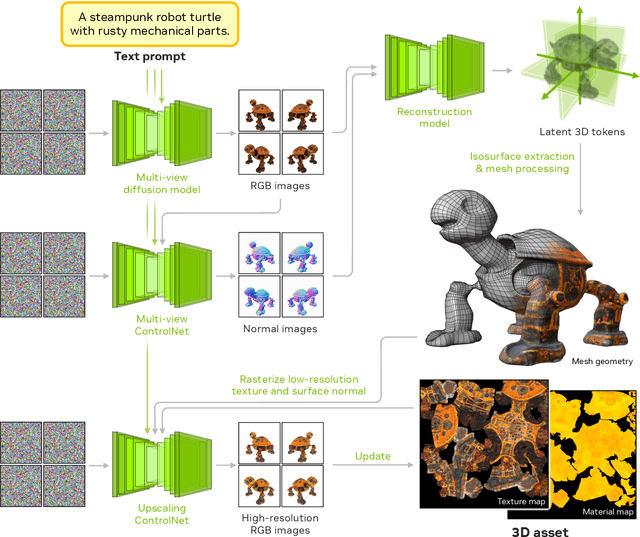
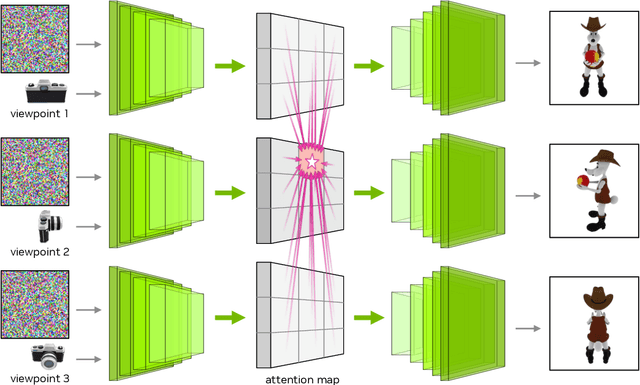
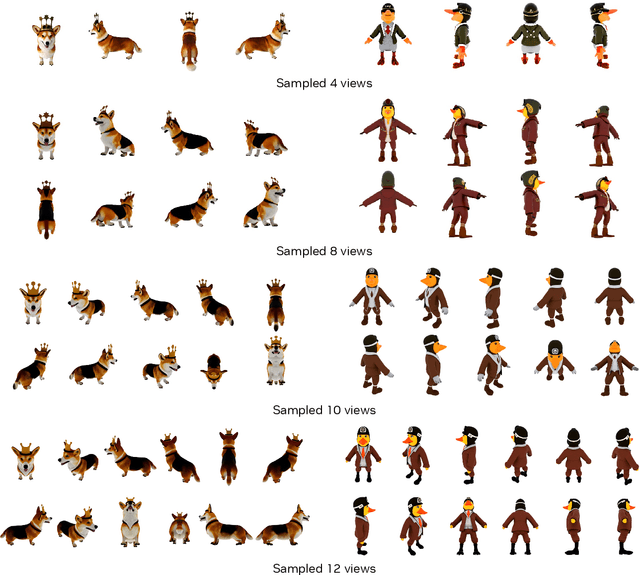
Abstract:We introduce Edify 3D, an advanced solution designed for high-quality 3D asset generation. Our method first synthesizes RGB and surface normal images of the described object at multiple viewpoints using a diffusion model. The multi-view observations are then used to reconstruct the shape, texture, and PBR materials of the object. Our method can generate high-quality 3D assets with detailed geometry, clean shape topologies, high-resolution textures, and materials within 2 minutes of runtime.
EdgeRunner: Auto-regressive Auto-encoder for Artistic Mesh Generation
Sep 26, 2024



Abstract:Current auto-regressive mesh generation methods suffer from issues such as incompleteness, insufficient detail, and poor generalization. In this paper, we propose an Auto-regressive Auto-encoder (ArAE) model capable of generating high-quality 3D meshes with up to 4,000 faces at a spatial resolution of $512^3$. We introduce a novel mesh tokenization algorithm that efficiently compresses triangular meshes into 1D token sequences, significantly enhancing training efficiency. Furthermore, our model compresses variable-length triangular meshes into a fixed-length latent space, enabling training latent diffusion models for better generalization. Extensive experiments demonstrate the superior quality, diversity, and generalization capabilities of our model in both point cloud and image-conditioned mesh generation tasks.
Masked Diffusion Models are Secretly Time-Agnostic Masked Models and Exploit Inaccurate Categorical Sampling
Sep 04, 2024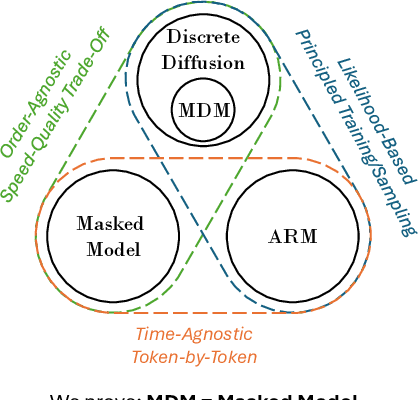

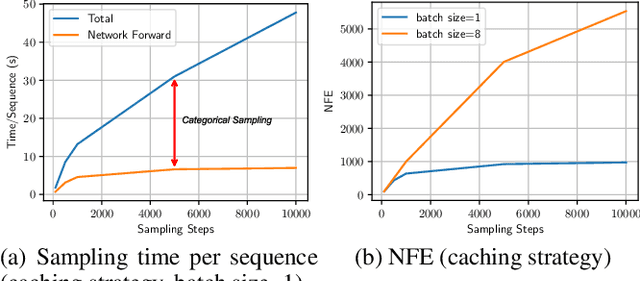

Abstract:Masked diffusion models (MDMs) have emerged as a popular research topic for generative modeling of discrete data, thanks to their superior performance over other discrete diffusion models, and are rivaling the auto-regressive models (ARMs) for language modeling tasks. The recent effort in simplifying the masked diffusion framework further leads to alignment with continuous-space diffusion models and more principled training and sampling recipes. In this paper, however, we reveal that both training and sampling of MDMs are theoretically free from the time variable, arguably the key signature of diffusion models, and are instead equivalent to masked models. The connection on the sampling aspect is drawn by our proposed first-hitting sampler (FHS). Specifically, we show that the FHS is theoretically equivalent to MDMs' original generation process while significantly alleviating the time-consuming categorical sampling and achieving a 20$\times$ speedup. In addition, our investigation challenges previous claims that MDMs can surpass ARMs in generative perplexity. We identify, for the first time, an underlying numerical issue, even with the 32-bit floating-point precision, which results in inaccurate categorical sampling. We show that the numerical issue lowers the effective temperature both theoretically and empirically, leading to unfair assessments of MDMs' generation results in the previous literature.
RefDrop: Controllable Consistency in Image or Video Generation via Reference Feature Guidance
May 27, 2024Abstract:There is a rapidly growing interest in controlling consistency across multiple generated images using diffusion models. Among various methods, recent works have found that simply manipulating attention modules by concatenating features from multiple reference images provides an efficient approach to enhancing consistency without fine-tuning. Despite its popularity and success, few studies have elucidated the underlying mechanisms that contribute to its effectiveness. In this work, we reveal that the popular approach is a linear interpolation of image self-attention and cross-attention between synthesized content and reference features, with a constant rank-1 coefficient. Motivated by this observation, we find that a rank-1 coefficient is not necessary and simplifies the controllable generation mechanism. The resulting algorithm, which we coin as RefDrop, allows users to control the influence of reference context in a direct and precise manner. Besides further enhancing consistency in single-subject image generation, our method also enables more interesting applications, such as the consistent generation of multiple subjects, suppressing specific features to encourage more diverse content, and high-quality personalized video generation by boosting temporal consistency. Even compared with state-of-the-art image-prompt-based generators, such as IP-Adapter, RefDrop is competitive in terms of controllability and quality while avoiding the need to train a separate image encoder for feature injection from reference images, making it a versatile plug-and-play solution for any image or video diffusion model.
Condition-Aware Neural Network for Controlled Image Generation
Apr 01, 2024



Abstract:We present Condition-Aware Neural Network (CAN), a new method for adding control to image generative models. In parallel to prior conditional control methods, CAN controls the image generation process by dynamically manipulating the weight of the neural network. This is achieved by introducing a condition-aware weight generation module that generates conditional weight for convolution/linear layers based on the input condition. We test CAN on class-conditional image generation on ImageNet and text-to-image generation on COCO. CAN consistently delivers significant improvements for diffusion transformer models, including DiT and UViT. In particular, CAN combined with EfficientViT (CaT) achieves 2.78 FID on ImageNet 512x512, surpassing DiT-XL/2 while requiring 52x fewer MACs per sampling step.
DistriFusion: Distributed Parallel Inference for High-Resolution Diffusion Models
Mar 07, 2024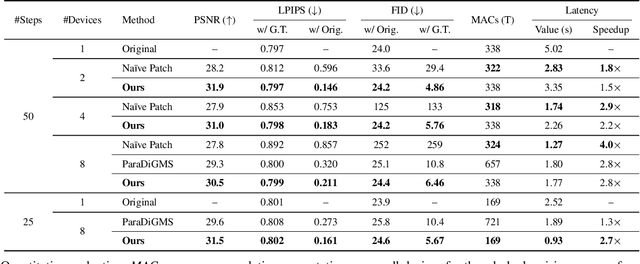
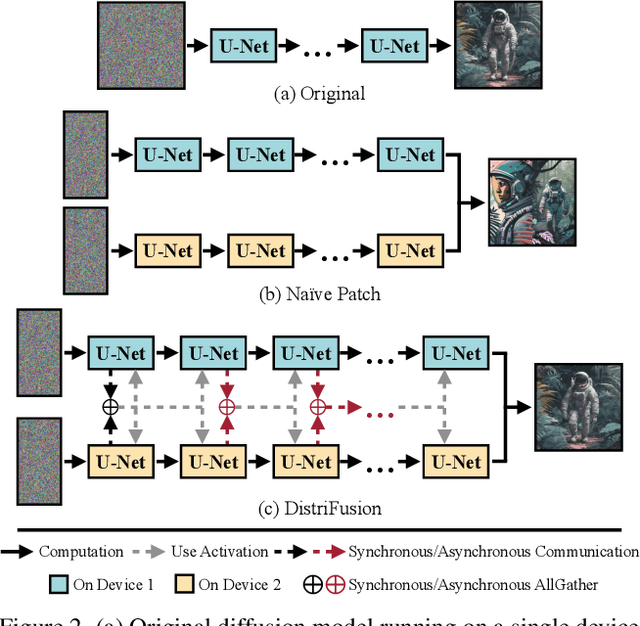
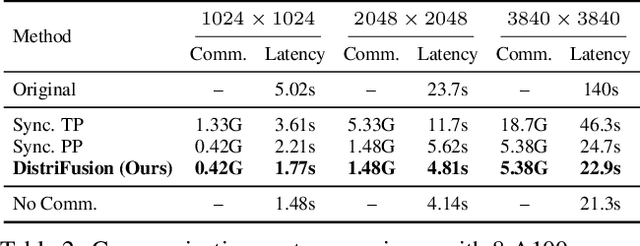
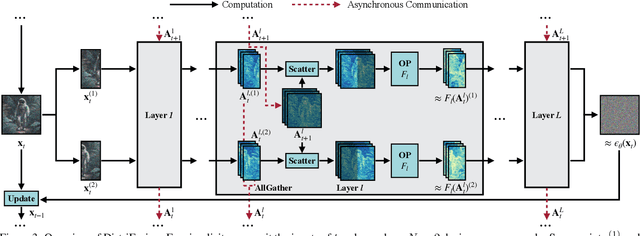
Abstract:Diffusion models have achieved great success in synthesizing high-quality images. However, generating high-resolution images with diffusion models is still challenging due to the enormous computational costs, resulting in a prohibitive latency for interactive applications. In this paper, we propose DistriFusion to tackle this problem by leveraging parallelism across multiple GPUs. Our method splits the model input into multiple patches and assigns each patch to a GPU. However, naively implementing such an algorithm breaks the interaction between patches and loses fidelity, while incorporating such an interaction will incur tremendous communication overhead. To overcome this dilemma, we observe the high similarity between the input from adjacent diffusion steps and propose displaced patch parallelism, which takes advantage of the sequential nature of the diffusion process by reusing the pre-computed feature maps from the previous timestep to provide context for the current step. Therefore, our method supports asynchronous communication, which can be pipelined by computation. Extensive experiments show that our method can be applied to recent Stable Diffusion XL with no quality degradation and achieve up to a 6.1$\times$ speedup on eight NVIDIA A100s compared to one. Our code is publicly available at https://github.com/mit-han-lab/distrifuser.
Symbolic Music Generation with Non-Differentiable Rule Guided Diffusion
Feb 23, 2024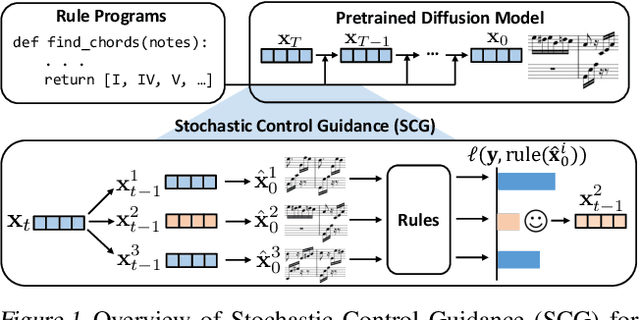



Abstract:We study the problem of symbolic music generation (e.g., generating piano rolls), with a technical focus on non-differentiable rule guidance. Musical rules are often expressed in symbolic form on note characteristics, such as note density or chord progression, many of which are non-differentiable which pose a challenge when using them for guided diffusion. We propose Stochastic Control Guidance (SCG), a novel guidance method that only requires forward evaluation of rule functions that can work with pre-trained diffusion models in a plug-and-play way, thus achieving training-free guidance for non-differentiable rules for the first time. Additionally, we introduce a latent diffusion architecture for symbolic music generation with high time resolution, which can be composed with SCG in a plug-and-play fashion. Compared to standard strong baselines in symbolic music generation, this framework demonstrates marked advancements in music quality and rule-based controllability, outperforming current state-of-the-art generators in a variety of settings. For detailed demonstrations, code and model checkpoints, please visit our project website: https://scg-rule-guided-music.github.io/.
 Add to Chrome
Add to Chrome Add to Firefox
Add to Firefox Add to Edge
Add to Edge